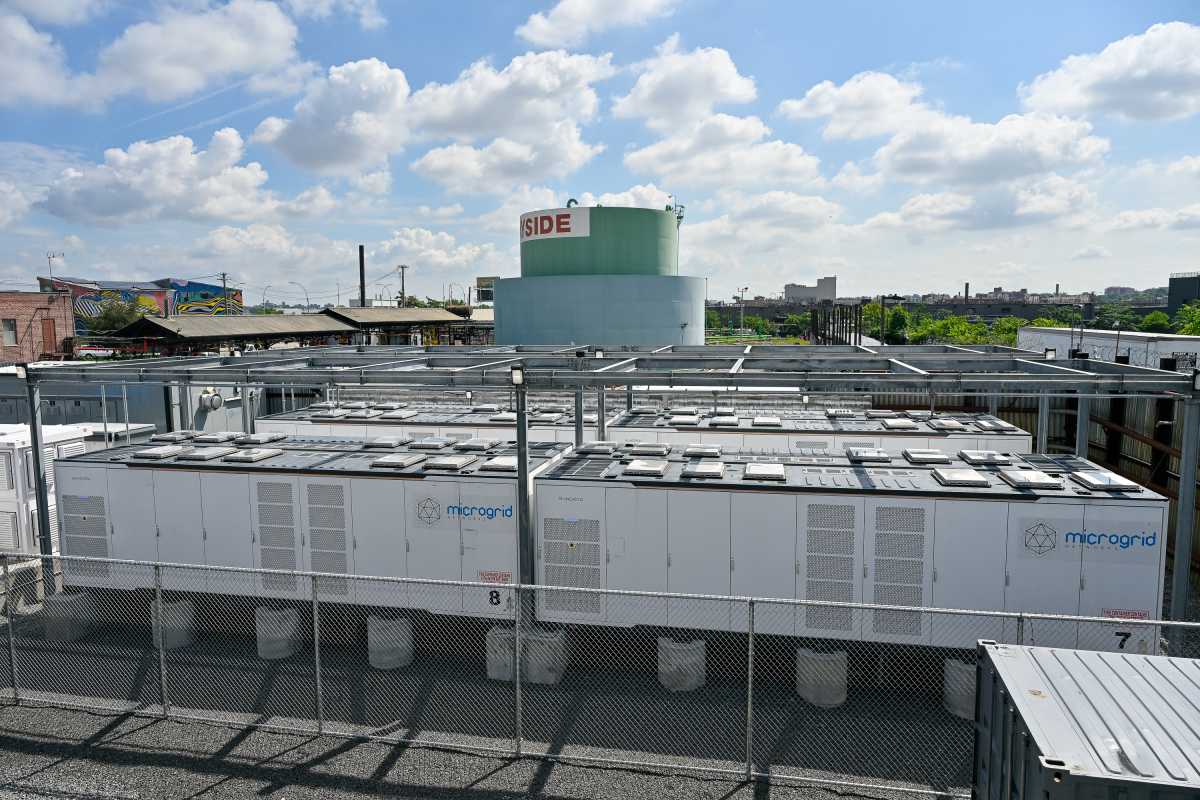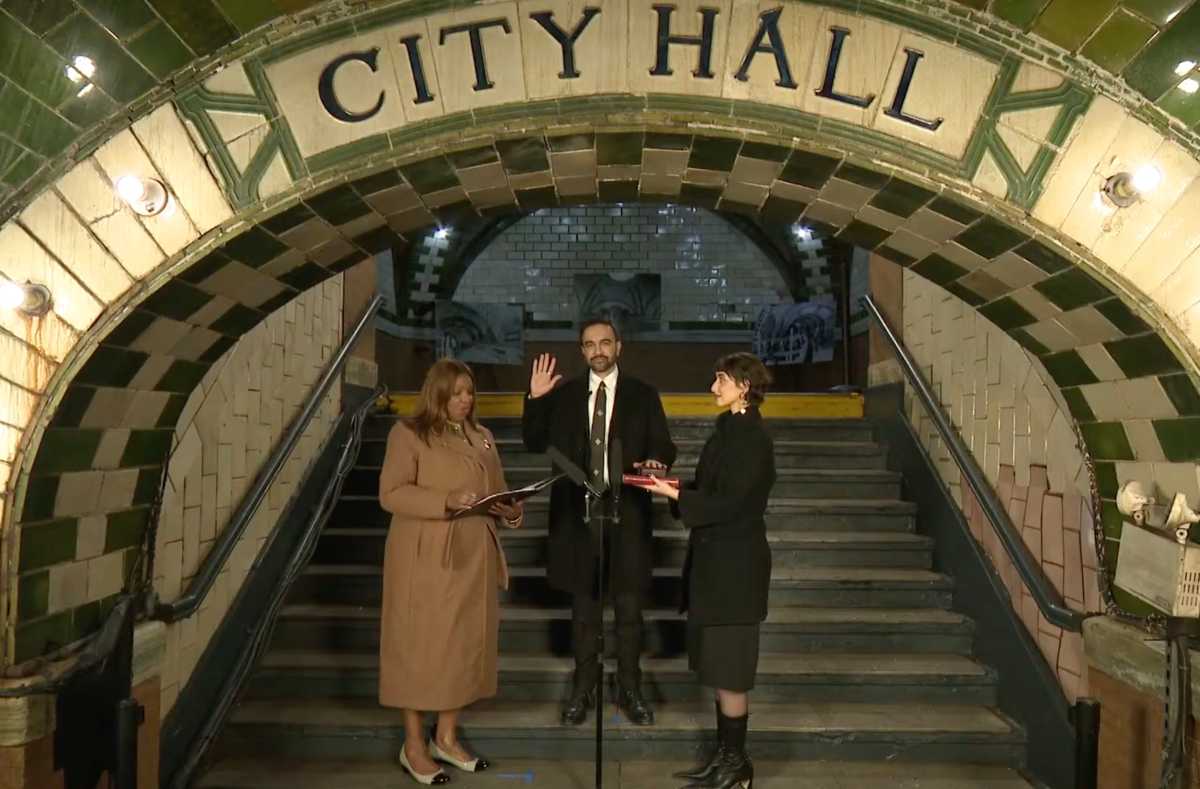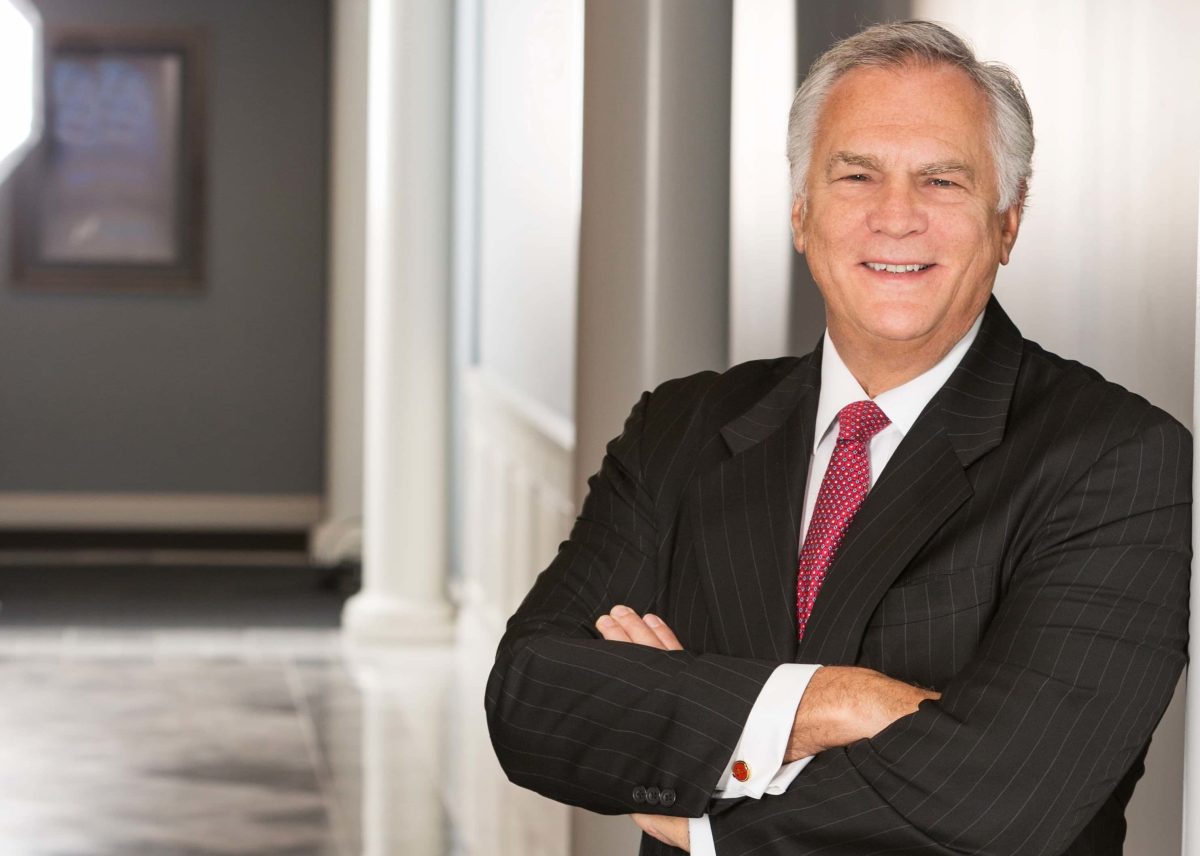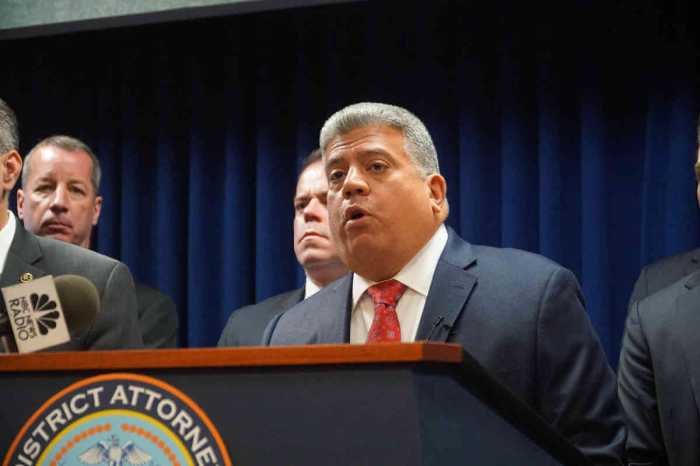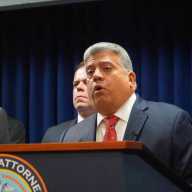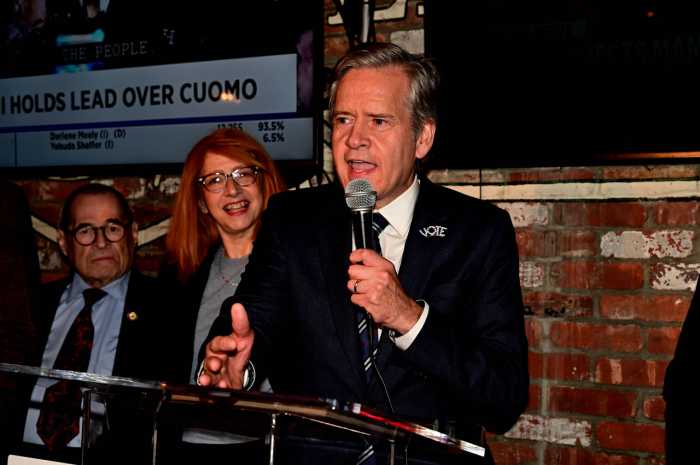With electricity demands surging due to emerging technologies like artificial intelligence and electric vehicles, and climate-driven heat waves intensifying, battery energy storage systems — or BESS — are becoming increasingly essential to building a more resilient energy infrastructure.
MicroGrid Networks (MGN), a leader in New York City’s clean energy transition, currently operates two BESS facilities in the city: one in Williamsburg, Brooklyn, and another in Maspeth, Queens. Twelve additional plants are planned across Brooklyn, Queens and the Bronx.
Brooklyn Paper recently toured MGN’s 5MW / 20MWh energy storage facility on Grand Street in Williamsburg to get a closer look at how the first-of-its-kind site helps ease the burden on the city’s strained electricity grid, particularly during periods of high demand. The site also features two public EV chargers, each with a capacity of 180 kW — the fastest in New York City.
“This facility is benefiting the Ridgewood network,” said Tim Dumbleton, co-founder and chief operating officer at MicroGrid Networks. “[BESS] is a way of shifting the consumption into the neighborhoods, providing power where it’s consumed, directly at the consumption point.”
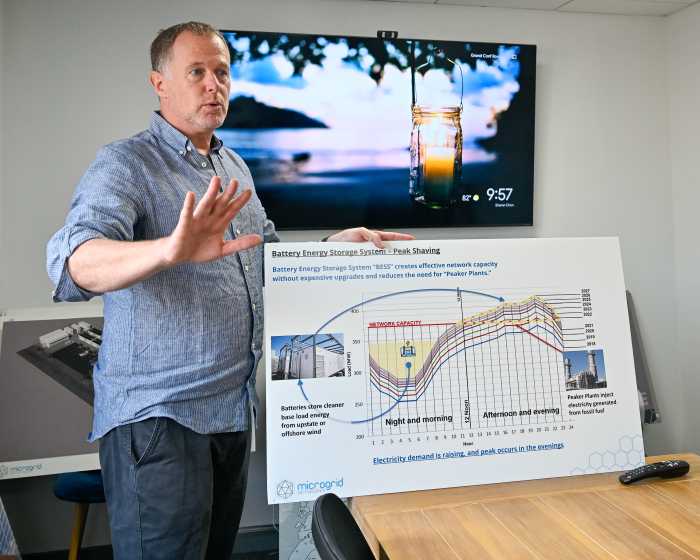
Dumbleton said BESS is the most cost-effective and efficient way to boost the city’s electric capacity, avoiding the need for costly upgrades to the existing power system.
“This system saves the ratepayers of New York a billion dollars between now and 2030,” Dumbleton said. “New York State Energy Research and Development Authority (NYSERDA) models show that facilities like this are saving ratepayers money because it’s cheaper to do this modernization than it is to dig up the streets and put in more wires.”
Giant lithium-ion batteries store energy from the Con Edison grid during off-peak hours, when demand is lowest. Electrons flow through underground high-voltage cables, known as feeders, into inverters and transformers, which adjust the voltage and current before channeling the electricity into the batteries.
The batteries are housed in eight weather-resistant, 30-foot-long containers and store 22 megawatt-hours — or 22,000 kilowatt-hours — of electricity. For comparison, a typical home uses about 30 kWh per day. The Williamsburg facility can power approximately 730 homes in the Ridgewood and Williamsburg areas.
During periods of peak demand, such as heat waves, when air conditioning use surges, power is discharged back into the Con Edison grid, helping to relieve pressure on New York’s aging electric infrastructure.
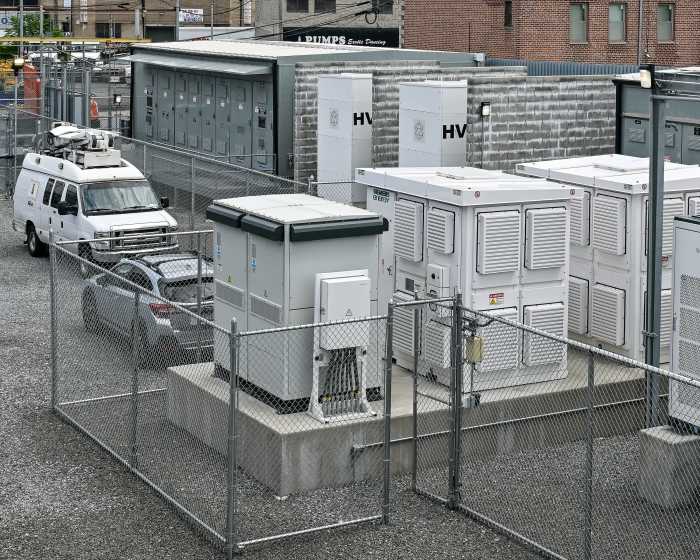
Energy storage safety
While faulty and illegal lithium-ion batteries have caused many deadly fires across the city in recent years, NYSERDA cautions that BESS technology should not be confused with e-bike batteries. Energy storage systems are highly regulated and subject to strict oversight, unlike e-bike batteries, which fall under different codes and safety standards.
Despite some community concerns about the safety of upcoming BESS facilities, experts emphasize the rigorous regulations in place. Paul Rogers, a former FDNY lieutenant and co-founder of the Energy Safety Response Group, noted that battery storage systems in New York City must comply with the FDNY’s “Rule 3 RCNY 608,” enacted in 2019. He said it is one of the strictest safety rules in the nation.
During his time with the FDNY, Rogers led the department’s efforts on energy storage system safety.
“We did a lot of research and development,” Rogers said. “We did a lot of testing. We knew the codes at that time were not up to par to handle the hazards associated with failures. What we did is we worked with the military, we worked with a lot of different outside people to try to figure out how we’re going to get this. Once we understood how they failed, and we started to see this through testing and data, we started to put pen to paper.”
Battery storage systems must meet FDNY fire safety requirements, and all BESS units with a rated energy capacity of 2 kilowatt-hours or larger in New York City require a Battery Energy Storage System Certificate of Approval (COA) issued by the FDNY. Regular inspections and emergency management plans help ensure ongoing compliance and safety.
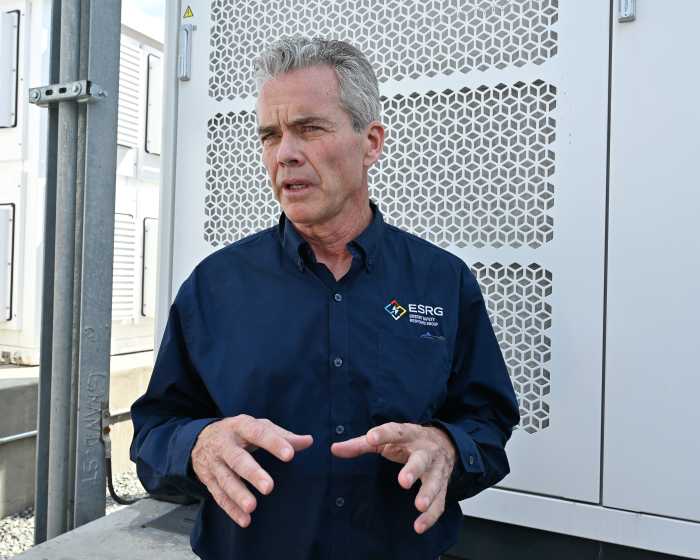
At MicroGrid Networks’ Williamsburg site, the battery containers are elevated three feet above ground because the facility sits in a flood zone near Newtown Creek. The containers are monitored 24/7 and equipped with air conditioning, a fire suppression system above the units, and heat, smoke and gas detectors. An FDNY-mandated, site-specific emergency management plan provides an additional layer of safety.
The battery management system is the “eyes and ears and the brains of this thing,” Rogers said.
“[The battery management system] shuts down the system in the event that there is something out of whack [or] that is unsafe, and it automatically, remotely shuts it down way before there’s any incident that takes place,” he explained.
BESS and the environment
BESS technology is a key part of New York State’s goal to generate 70% of its electricity from renewable sources by 2030 and achieve a zero-emission electric grid by 2040, while phasing out fossil fuels.
Kyle Rabin, a policy analyst with the Alliance for Clean Energy New York, told Brooklyn Paper that integrating battery energy storage is fundamental to creating a more efficient, flexible and cost-effective electric grid in the state.
“This is an important part of having an operational grid and supporting the grid, making sure that we’re delivering electricity to people in their communities when they need it most,” Rabin said. “Battery storage facilities systems increase supply reliability and are essential to supplying our homes and communities with emissions-free power.”
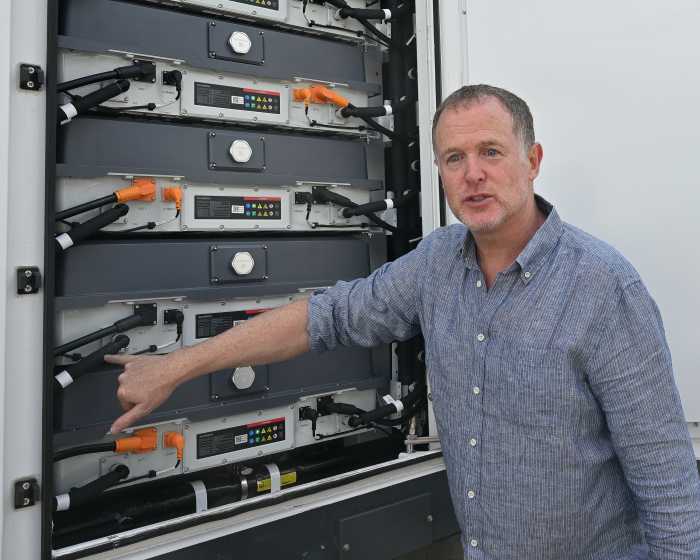
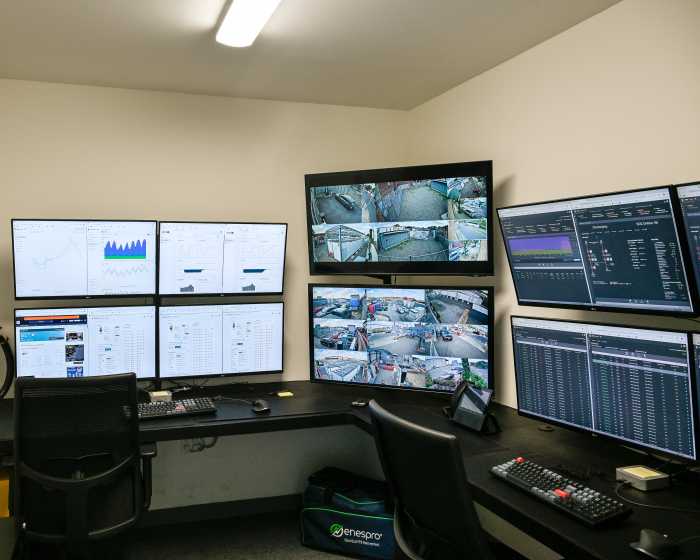
BESS could also eliminate the need for peaker plants — fossil fuel–powered plants that run only during times of high demand and emit harmful greenhouse gases. Most of New York City’s peaker plants are located in underserved communities, where greenhouse gas pollution has contributed to higher rates of respiratory illnesses such as asthma.
“Battery storage is playing an important role in terms of clearing the air,” Rabin said. “It’s good for the environment. In some areas that have a disproportionate amount of industry and power generation, battery energy storage can help to reduce some of those environmental injustice [and] environmental pollution impacts. It’s an important way of cutting down on that pollution for people who are bearing an unfair burden of power generation, industrial pollution, even transportation pollution.”


